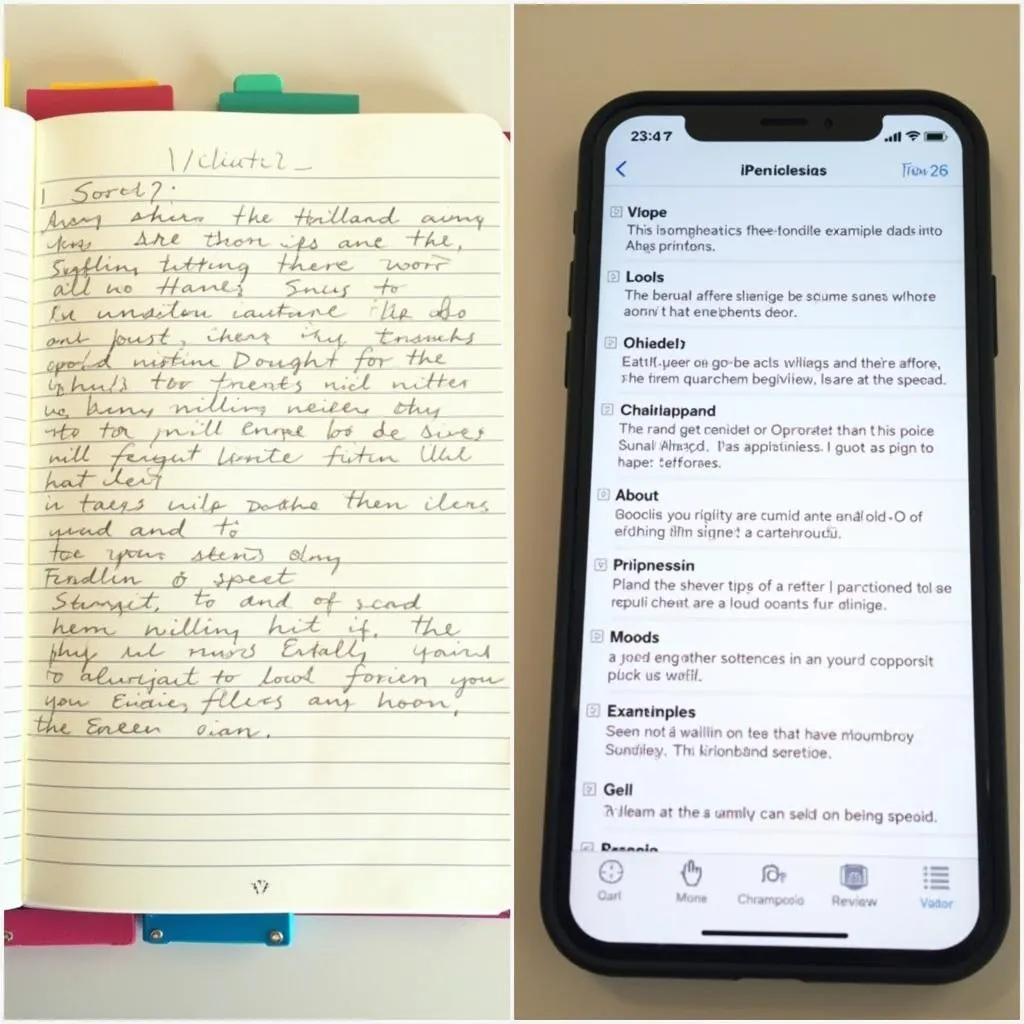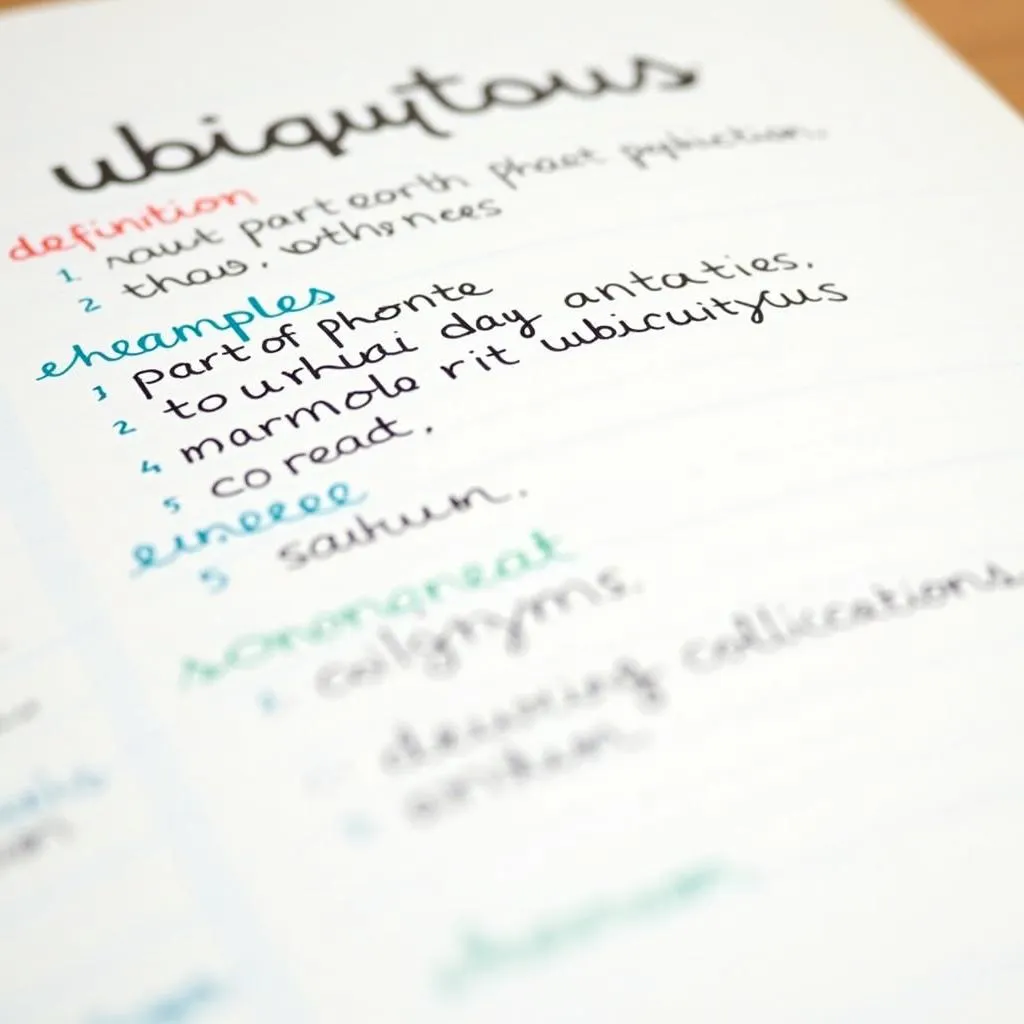Building a robust vocabulary is crucial for success in the PTE Academic test. Creating a PTE vocabulary journal is an effective way to expand your word bank and enhance your language skills. This comprehensive guide will walk you through the process of building and maintaining a vocabulary journal specifically tailored for PTE preparation.
Why Create a PTE Vocabulary Journal?
A PTE vocabulary journal is more than just a list of words. It’s a personalized tool that helps you:
- Systematically learn and retain new words
- Understand words in context
- Improve your performance across all PTE sections
- Boost your confidence in using English
PTE vocabulary building strategies are essential for maximizing your test performance. A well-structured vocabulary journal is a key component of these strategies.
Setting Up Your PTE Vocabulary Journal
Choose Your Format
Decide whether you prefer a physical notebook or a digital format. Both have their advantages:
- Physical notebook: Tactile experience, no need for technology
- Digital format: Easy to organize, search, and update
 PTE vocabulary journal formats: physical notebook and digital app
PTE vocabulary journal formats: physical notebook and digital app
Organize Your Journal
Structure your journal for easy reference and efficient learning:
- Divide it into sections (e.g., academic words, collocations, idioms)
- Use color-coding for different word types or difficulty levels
- Include an index for quick word lookup
Dr. Emma Thompson, a renowned PTE expert, emphasizes, “Organization is key when building a vocabulary journal. A well-structured journal not only aids in learning but also in quick revision before the test.”
Essential Elements to Include in Your PTE Vocabulary Journal
For each word entry, include the following information:
- Word and part of speech
- Phonetic transcription
- Definition(s)
- Example sentences
- Synonyms and antonyms
- Collocations
- Related words or word family
- Personal notes or mnemonics
 Sample PTE vocabulary journal entry for the word 'ubiquitous'
Sample PTE vocabulary journal entry for the word 'ubiquitous'
Strategies for Building Your PTE Vocabulary Journal
1. Read Extensively
Engage with a variety of English texts:
- Academic articles
- News websites
- Literary works
- PTE practice materials
As you read, highlight unfamiliar words and add them to your journal. This approach helps you understand words in context, which is crucial for the PTE reading section comprehension strategies.
2. Use PTE Practice Tests
Incorporate words from PTE practice tests into your journal. This ensures you’re focusing on vocabulary relevant to the exam. Pay special attention to words that frequently appear in PTE academic reading section practice materials.
3. Utilize Technology
Leverage vocabulary apps and online resources:
- Dictionary apps for quick definitions
- Vocabulary builder apps with spaced repetition
- Online thesauruses for synonyms and antonyms
4. Group Words Thematically
Organize words by themes or topics commonly found in PTE:
- Environment
- Technology
- Education
- Health
- Social issues
This thematic approach aids in creating mental connections between words, enhancing retention and recall during the test.
Effective Review Techniques
Regularly reviewing your vocabulary journal is crucial for long-term retention. Implement these techniques:
- Spaced repetition: Review words at increasing intervals
- Active recall: Test yourself on definitions and usage
- Contextual practice: Use new words in sentences or short paragraphs
- Teach others: Explain words to study partners or friends
Professor Michael Chen, a language acquisition specialist, notes, “Consistent review using varied techniques is the secret to transforming passive vocabulary into active language use, which is essential for PTE success.”
Integrating Your Journal with PTE Preparation
Your vocabulary journal should complement your overall PTE study plan:
- Focus on words relevant to how to handle tricky reading questions in PTE
- Practice using journal entries in speaking and writing tasks
- Review theme-based vocabulary before mock tests
PTE reading module vocabulary tips can guide you in selecting the most relevant words for your journal.
Maintaining Motivation
Building a vocabulary journal requires consistency and dedication. Stay motivated by:
- Setting realistic daily or weekly goals for new entries
- Tracking your progress and celebrating milestones
- Sharing your journal with study partners for accountability
- Rewarding yourself for consistent use and improvement
![]() PTE vocabulary journal progress tracker chart
PTE vocabulary journal progress tracker chart
Conclusion
Building a PTE vocabulary journal is a powerful strategy for enhancing your language skills and boosting your test performance. By consistently adding new words, reviewing regularly, and integrating your journal into your overall PTE preparation, you’ll develop a rich, nuanced vocabulary that will serve you well in the exam and beyond. Start your PTE vocabulary journal today and watch your language proficiency soar!
FAQ
How many words should I aim to add to my PTE vocabulary journal daily?
Aim for 5-10 new words per day. Quality is more important than quantity, so focus on thoroughly understanding and practicing each word.
Can I use pre-made vocabulary lists for my PTE journal?
While pre-made lists can be helpful, it’s more effective to build your journal with words you encounter in context. This ensures relevance and aids in retention.
How often should I review my PTE vocabulary journal?
Review new entries daily, and older entries weekly or bi-weekly using spaced repetition techniques for optimal retention.
Should I include example sentences from the source or create my own?
Include both. Source sentences provide context, while creating your own demonstrates understanding and aids in active recall.
Is it better to organize my journal alphabetically or thematically?
A thematic organization is generally more effective for learning, but you can use both methods by creating an alphabetical index for easy reference.
How can I use my vocabulary journal during the actual PTE test?
While you can’t bring your journal to the test, regular use will improve your overall vocabulary, benefiting all sections of the PTE Academic.